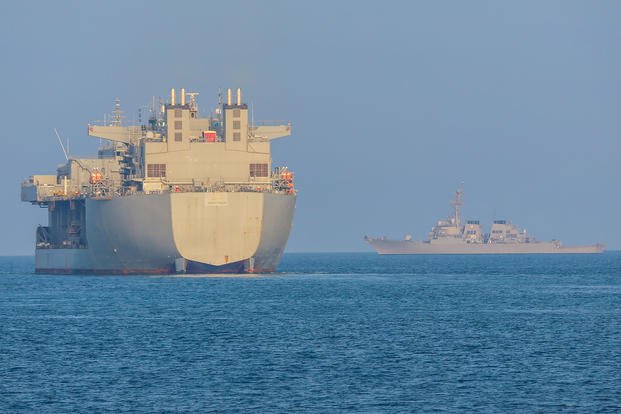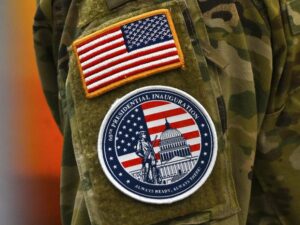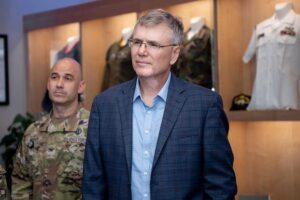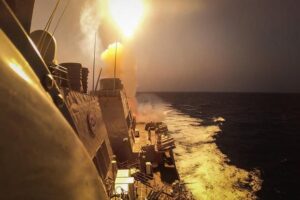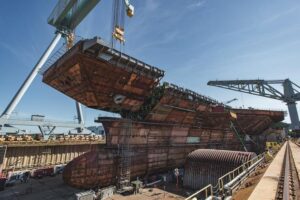Navy Faces Ship Shortage Amid Civilian Crew Deficit, Raising Concerns for Marine Operations
The U.S. Navy is set to dock 17 ships due to a lack of civilian mariners, a decision that has stirred apprehension within the Marine Corps regarding its ability to transport and support troops. This development, confirmed by Rear Adm. Philip Sobeck, Military Sealift Command (MSC) leader, aims to alleviate the strain on overworked civilian mariners and restore ship maintenance capabilities.
During a recent press briefing, Sobeck highlighted that this strategic pause would unfold over two years but refrained from specifying when the ships would return to service. This situation is expected to impact the Marine Corps significantly, as it will further complicate existing challenges in deploying troops effectively.
The announcement from Sobeck validates earlier reports from USNI News regarding the Navy’s plans to sideline these vessels. A Marine Corps source indicated that the service had been informed of the Navy’s intentions in August, expressing concerns at that time.
An official from the Marine Corps noted, “If this workforce initiative is a rebrand of the original MSC reset, then 16 of the 17 ships have direct Marine Corps equities.” The anticipated sidelining includes a mix of fleet replenishment ships, a fleet oiler, 12 fast transport vessels, two forward-deployed expeditionary sea bases, and an ammunition transport ship.
The absence of these ships is expected to impair Marine stand-in forces and Marine Expeditionary Units, particularly during a critical period for training and preparedness. This aligns with Sobeck’s remarks, as he emphasized that specific ship names remain undisclosed to optimize both maintenance and operational capabilities.
The Navy’s decision to dock support ships coincides with ongoing issues in its amphibious fleet, upon which Marines depend for global crisis response. Recent global events, including operations in Turkey, Sudan, and in response to Russian military activities, have highlighted these challenges, according to now-retired Lt. Gen. Karsten Heckl earlier this year.
The Marine Corps’ reliance on the Navy’s 31 amphibious warships is integral to its “MEU 3.0” strategy, which demands continuous deployments from various locations. However, the Corps has been considering fast transport ships as a temporary solution amidst amphibious ship availability issues, as reported by USNI.
This move to sideline ships may exacerbate existing worries as the Marines continue to deploy across strategic regions, including the Pacific and Mediterranean. Additionally, this situation reflects broader efforts by the Navy to revitalize its industrial capabilities amid persistent delays and challenges in shipbuilding and maintenance.
Adm. Lisa Franchetti, the Navy’s chief officer, emphasized the significance of recruiting and workforce development during the annual Sea Air Space conference, stating, “all of the industry partners are facing some of the same challenges in the workforce [that the military is].” She highlighted efforts to establish recruitment and training pipelines to address these issues.
In Newport News, Virginia, a maritime industry hub, the workforce shortage is already significant, with a reported deficit of 10,000 workers, a figure projected to quadruple by 2030, according to a local news outlet report.

